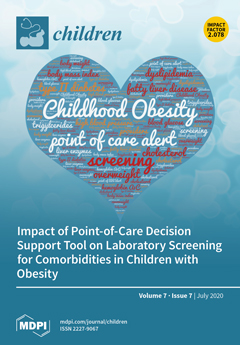Background: Drowning is the second leading cause of unnatural death in childhood worldwide. More than half of the drowned children, who were in need of cardiopulmonary resuscitation (CPR) at the scene suffered from lifelong neurological sequelae. There are few data about prognostic predictors
[...] Read more.
Background: Drowning is the second leading cause of unnatural death in childhood worldwide. More than half of the drowned children, who were in need of cardiopulmonary resuscitation (CPR) at the scene suffered from lifelong neurological sequelae. There are few data about prognostic predictors in the pediatric population of drowning victims. The objective of the study was to assess incident characteristics, prognostic parameters, and long-term outcome of children recovering from a drowning incident. Methods: We carried out a retrospective analysis of data of the cohort of pediatric cases (age 0–18) of drowning victims admitted in the years 2000–2015 to the emergency room/intensive care unit/pediatric ward at the University Children’s Hospital of Zurich, Switzerland. Outcome was classified by the Pediatric Cerebral Performance Category Scale (PCPCS). New subcategories of severity for known prognostic parameters have been defined. A correlation analysis was performed between the subcategories of the prognostic parameters and the PCPCS. Results: A total of 80 patients were included in the analysis. Of these, 64% were male, most of the patients were at the age of 0–5 years. More than 80% of the patients were unattended at a public or private pool when the drowning incident happened. In all, 61% (
n = 49) needed cardiopulmonary resuscitation (CPR). Of the resuscitated children, 63% showed good to mildly impaired long-term outcome (PCPCS 1–3). Furthermore, 15% (
n = 12) were transferred to rehabilitation. Seven children died during the hospital stay and another four died due to complications in the ten years following the incident. The newly defined subcategories of the parameter submersion time, Glasgow Coma Scale (GCS) at time of admission, body temperature at time of admission, blood pH, blood glucose, and blood lactate level correlated significantly with the PCPCS. Conclusions: Supervision of children, especially boys of the age 0–5 years, next to public or private pools is most important for prevention of drowning incidents in Switzerland. Cardiopulmonary resuscitation done by trained staff leads to a better long-term outcome. Medical decision making in severe cases of drowning should consider submersion time, GCS at time of admission, body temperature at time of admission, blood pH, blood glucose, and blood lactate levels, as these parameters correlate with long-term outcome.
Full article






